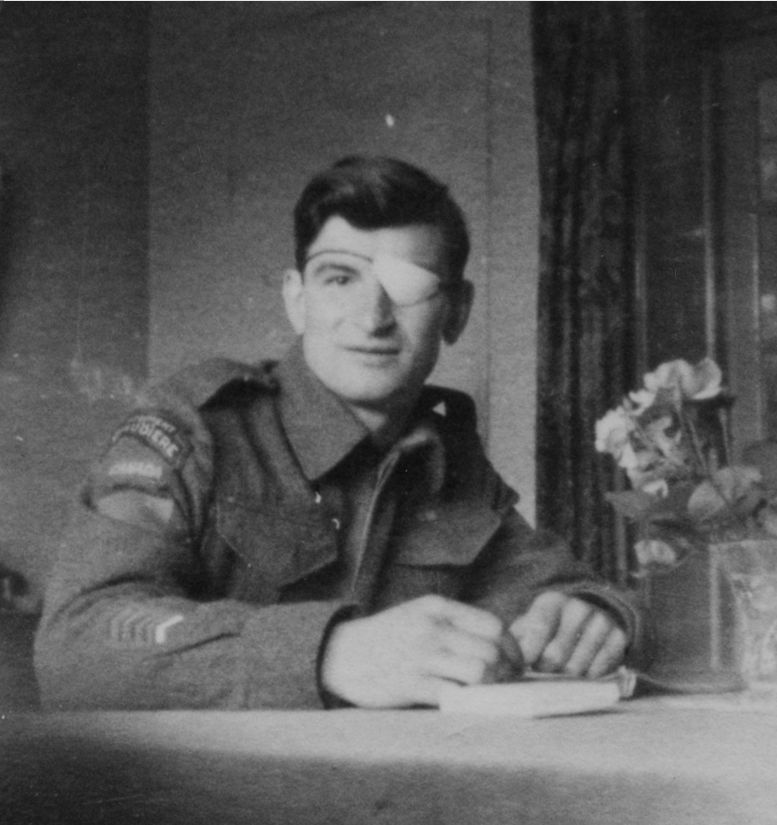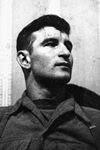I Was There! - Sapper's Great Battle of the Rhine Bridges
The War Illustrated, Volume 9, No. 225, Page 634-635, February 1, 1946.
The Corps of Royal Engineers is tackling operations which, when completed, will take a place in engineering history. Temporary structures thrown up by the Army in battle conditions are being replaced by sappers, whose manner of working was witnessed, in Dec. 1945, by H. D. Ziman, The Daily Telegraph correspondent. His account is here slightly condensed.
At Wesel a few days ago I watched the first permanent bridge across the Rhine being built over its wide waters. It was raining hard, and the rain changed to snow, but the Corps of Royal Engineers undertakes jobs which no civil contractor would attempt in winter. After dark the sappers continue by “artificial moonlight”, with searchlights floodlighting their work.
Seven days a week they are putting in on Wesel Bridge. For if they have not got the bridge finished early in January, ice may sweep away the present temporary Rhine bridges and the Army of Occupation would thus be cut off from all but ferry communication with the west.
So, rain or snow, daylight or dark, the sappers are pressing on to complete a double carriageway across the Rhine. Farther up the river, at Cologne, another R.E. Unit is building a similar but shorter bridge, which is to be ready later next month. These two giant bridges, involving 8,000 to 10,000 tons of concrete apiece, and roughly 2,000 tons of steel, are only a small part of the bridging on which the R.E. Are engaged in this dismal region of Germany.
The bridges the Army built in a few hours in battle conditions were not meant to last more than a few months. Their design could pay no attention to the barge traffic of Continental waterways. The coal which is now piled up inaccessible at Ruhr pitheads lies there not merely because Germany's railway system is battered, but because during the battle our engineers could not pause to unblock canals or to build bridges sufficiently raised above the water-level to allow coal-barges to pass beneath them.
Before visiting Wesel I saw some of the new bridges already made and others now in their final stages. In a few instances it was possible to jack up a concrete bridge built by the Germans and put in a kind of reinforced concrete “patch” either end.
In the main, however, it has been a matter of breaking up and removing the old German bridge, building a new approach and carrying across the canal, river or road a new construction in double or triple-storey Bailey spans, with approach spans laid on steel joists.
Bailey bridges are of extremely light thin steel, and in a year or so they would rust away beyond the safety margin, but given paint and a few spanners they are not difficult to maintain, and they should last the Germans 10 or 20 years, while their foundations will stay good for permanent civilian bridging.
It general the bridging programme was completely to time before the beginning of December 1945. Sometimes tow months' work was needed for a single operation; for instance, the bridging of the 110-ft. span at Hiltrup. The men who built this and many other bridges were an old Territorial unit from Kent originally trained to operate searchlights on the Medway, later used for oil demolitions at the time of Dunkirk, and in 1944 as general assault engineers. The officer in charge was a mining engineer in civil life. But searchlights, oil demolitions, tunnelling or bridge building – it is all one; the R.E. Will turn their hand to anything.
One unit of three companies has cleared 20 bridges with an average span of 300 ft. from the Ruhr waterways, built the Herne bridge with 230 ft. of dual carriageway and tramways, and then turned to opening up the autobahn from Berlin to Duisburg.
Another R.E. Company, having built three semi-permanent autobahn bridges, has turned to maintaining the main British traffic route into Germany, employing for the improvement of the autobahn and the supply route 13 civilian German firms. The British Pioneer Corps, which used to do much of this rough work during the campaign, has been relieved of this duty in Germany, and the sappers employ either German civilian labour or Wehrmacht parties awaiting discharge.
On the Wesel Bridge one skilled German Army steel construction company, one unskilled labour unit of the Wehrmacht and a number of German contractors with civilian labourers are employed, working under the direction of XII Corps Troops Royal Engineers, whose commanding officer is. Lt.-Col. L. F. Heard, R.E.
Work started on October 1, and when finished it will probably go down in engineering history not merely as an example of rapidity of construction but as a major bridging operation carried out on entirely unorthodox lines. The bridge, 2,032 ft. long, is to carry tow roadways side by side with a cycle-track between them and a foot-walk at the side.
Most of the material is standard double-storey or triple-storey Bailey, designed to get as long a span as possible, the tow centre navigational spans being each 240 ft. long. It is supported on seven piers, each consisting of 70 ft. long steel tubes 22 ins. across and filled with reinforced concrete. The central pier contains a trestle of 24 of these tubes and the remaining piers 18 tubes apiece.
The designer of the bridge, Major Ralph Freeman, R.E., decided to make use in the first stages of the wooden trestle bridge built on this site by the United States Army. Above this “Roosevelt Bridge” a false or temporary Bailey 15 ft. high has been built, and above this the real bridge is to be built, with the central station run across on rollers.
Once the first main roadway is across it will be jacked slowly to one side on the concrete bases which await it at the top of the steel trestles. Then the central spans of the second and parallel roadway will be drawn across to take the position from which the first roadway has been edged. The Army will complete in a little over three months a job which would normally take a large civil engineering contractor the best part of a year.
Meanwhile, the channel of the Rhine is clear, and I saw processions of Dutch barges being towed up and down under the half-complete new Wesel Bridge. For the present the tugs going downstream have to turn and back their barges down, but when the temporary wooden trestles are removed the passage will be less obstructed, and the battle of German coal move faster.
Previous and next article from I Was There!
I Was There! - How Two V.C.s Were Won Under a Jap Cruiser
Lieut. Ian E. Fraser, R.N.R., of Farnham Common, Bucks., and Leading Seaman James J. Magennis, of Belfast, were each awarded the V.C. For the parts they played in a midget submarine attack on the Japa
I Was There! - How I Said Good-bye to Bonaventure
Early in the morning of March 31, 1941, H.M.S. Bonaventure, accompanied by the destroyer Hereward, was escorting two troopships from Crete to Alexandria, when she received two torpedoes in the starboa
Index
Previous article
Allied Front-Line Planes That Flew Unarmed
Air-Sea Rescue services were busier during the Arnhem operation than on D-Day, and no fewer than 181 airborne troops were then rescued from wrecked Hamilcar and Horsa gliders. In the Mediterranean zon
Next article
Now It Can Be Told! - Jap Praise for the Gallant 'Stronghold'
A British naval officer lately returned to England after spending nearly four years in a Japanese prisoner of war camp has told for the first time the full story of how H.M. destroyer Stronghold was s





